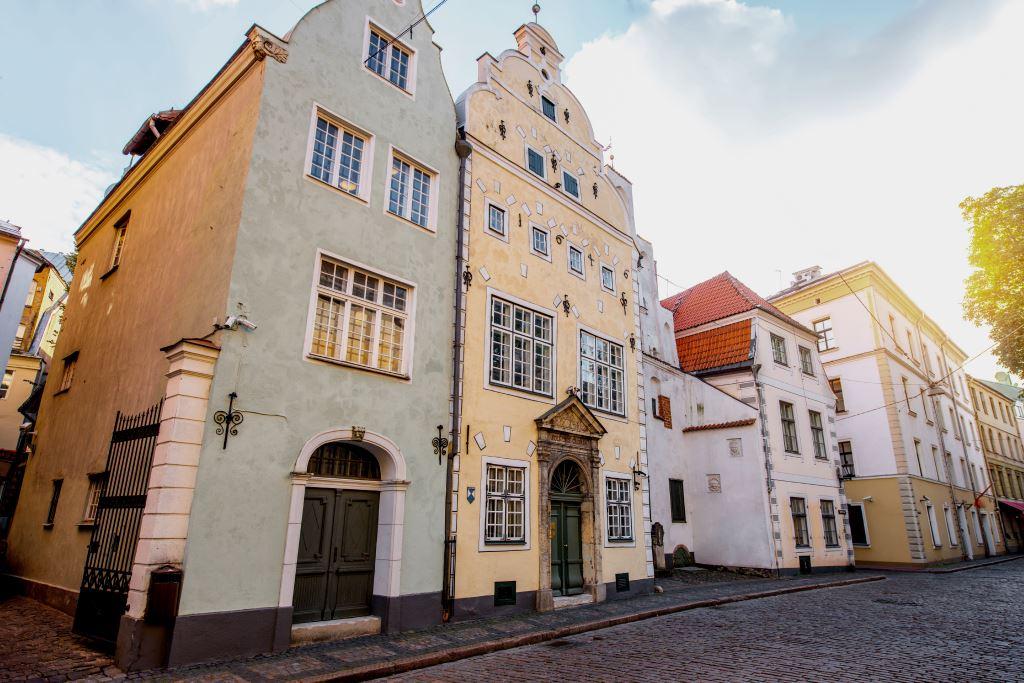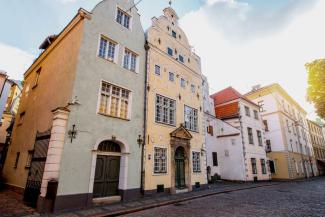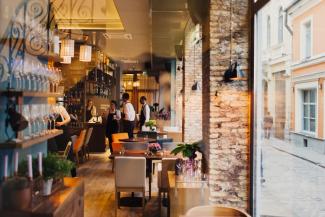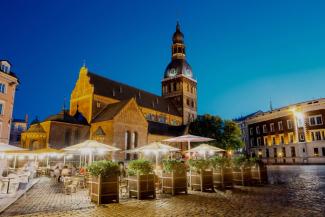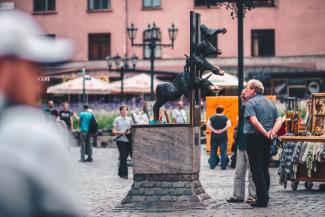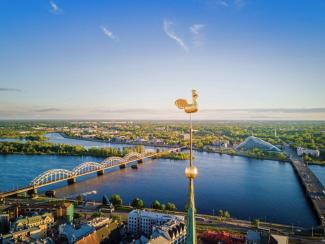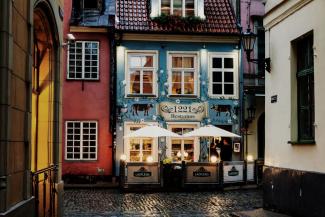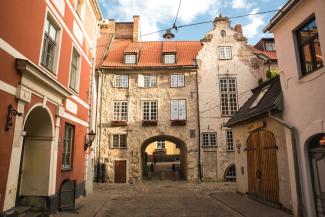Old Town Riga is a popular entertainment district in the historical and geographical center of the Latvian capital, featuring cobble-stone streets and an abundance of architectural gems.
Relax and be entertained in Old Town
- Spread your arms out on Rozena Street, the narrowest street in Riga, where you can touch opposite walls at once;
- Have a meal at one of the restaurants in Riga;
- View the churches of Old Town and a stunning view of Riga from the 72-meter high St Peter’s Church tower;
- Visit one of the arts and crafts houses or souvenir stalls on Skarnu Street, where it is also possible to learn about the city’s rich trade history;
- Get a feeling of tranquility right in the center of Riga by visiting either John’s Courtyard or Konventa Courtyard.
Old Town Riga architecture
Old Town Riga, with its narrow cobblestone streets, not only features gorgeous Medieval-era buildings but unique sacral structures as well.
Craftsmen and artist houses
Buildings in the growing city were constructed by guilds of craftsmen and artists. Old Town is a striking example of how cities were built back in the day.
The buildings in Old Town are varied and constructed during different periods of history. It features over 500 buildings built in various architectural styles – Romanticism, Gothic, Mannerism, Baroque, Eclectic, Modernism, etc.
Visit the Dannenstern building featuring an exhibition on how prosperous Riga residents once lived, the trio of historical buildings known by locals as the Three Brothers, as well as Riga Castle, the Powder Tower, and many other architecturally and historically important edifices.
Old Town churches
In a relatively confined territory, five religious denominations were able to live peacefully with one another – each of them having its own church.
Old Town Riga’s most well-known churches:
- Riga Dome Cathedral – the seat of the Latvian Lutheran Church’s archbishop, its foundation stone was laid in the 13th century and features a magnificent organ with outstanding sound
- St Peter’s Church – features the highest church tower in the city with a viewing platform;
- St Jacob’s Church is the seat of the Roman Catholic Church’s cardinal in Latvia.
Cultural landmark
- In 1967 Old Town was recognized as a national protected zone,
- Since 1987 is a town planning landmark,
- Since 1997, the historical center of Riga has been included on UNESCO’s World Heritage List
- In 2007, thanks to Old Town’s panorama and silhouette, Riga was granted the European Heritage Label
- Most buildings in Old Town have the status of cultural heritage landmarks
History of Riga
Riga was established in 1201 by Bishop Albert, and was granted city status in 1225. Even though local Liiv tribes inhabited this marshy territory on the banks of the Daugava River, the city’s history is associated with Germanic and Christian cultures.
In 1282, Riga became a member of the Hanseatic League, strengthening its position as an important trading city in the region.
Over the centuries, the city has developed as a center for trade, transit and later also became an industrial center. Up until the 19th century, Riga developed as a Germanic city, even though it had been previously under Swedish, Polish, and Russian control. However, in more modern times, Latvians began to take a larger role in the city.
